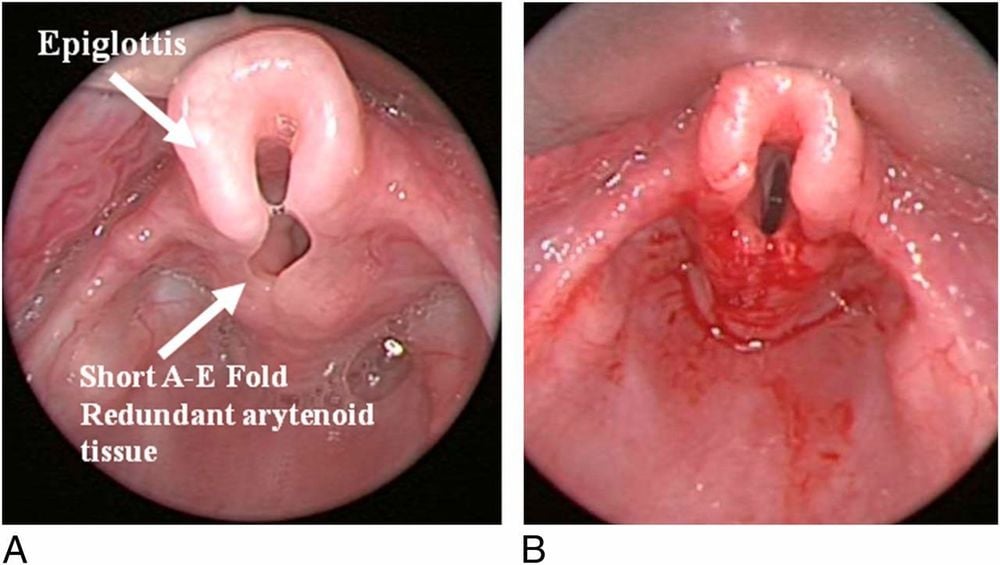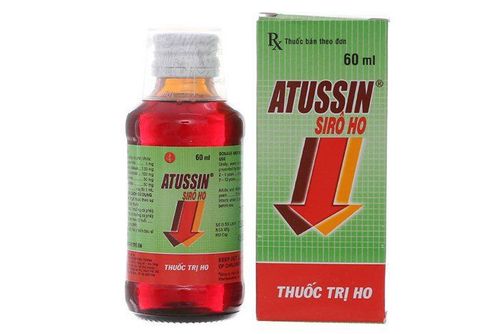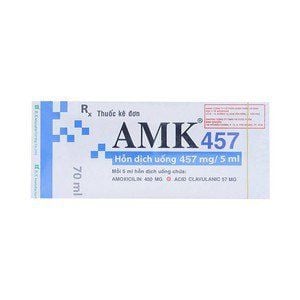This is an automatically translated article.
Posted by Doctor Le Van Quang - Department of Medical Examination and Internal Medicine - Vinmec Nha Trang International Hospital
Acute epiglottitis is an acute inflammation of the epiglottis (glottis) and epiglottis that can lead to tracheal obstruction, asphyxiation, and death if not treated promptly and is considered a medical condition. Emergency in Otolaryngology.
1. What is acute epiglottitis?
Laryngitis has many causes but is mainly related to infection with Haemophilus influenza type b (Hib).Since the Hib vaccine has been widely used for more than 2 decades, the rate of acute epiglottitis has decreased significantly. And the trend of the affected audience also changes.
For example, a large statistic in England and Wales shows that the rate of decrease in Hib cases since 2002 has decreased significantly and reached the lowest rate in 2012 at 0.02/100000 (14 cases). The frequency of Hib infection in children <5 years old was 0.06/100000 (2 cases), compared with 35.5/100000 cases without routine vaccination before. From 2009-2012, only 19 cases of acute epiglottitis were reported. 68% of them (13/19 cases) occurred in adults. And child mortality is currently < 1%, but up to 7% in adults and almost all deaths are due to untimely and inappropriate diagnosis and management.
Thus, we see that the role of Hib vaccine in children is very important in preventing diseases caused by Heamophilus influenza type b such as pneumonia, skin and tissue inflammation, osteoarthritis, otitis media and laryngitis. true.
Today, with the full vaccination of Hib vaccine, the frequency in children in developed countries is very rare, mostly only in adults with immune problems and other comorbidities. And areas that are not fully vaccinated with Hib vaccine.
2. Causes of epiglottitis
Infection is the leading cause. H influenzae type b was the most common pathogen before vaccination. Virus, Streptococcus pneumoniae, Haemophilus parainfluenzae, varicella-zoster virus, herpes simplex virus type 1, Staphylococcus aureus ...
Other noninfectious causes of epiglottitis include hot substances, causing epiglottitis heat. Heat-related laryngitis occurs after eating or drinking liquids and foods that are too hot, which can cause burns.
Inhaling narcotics such as cocaine or marijuana (marijuana) is also a notable cause group.
Inflammation of the epiglottis can also occur after drug reactions, insect bites... causing edematous allergic reactions. Trauma from a blunt object or being blocked by something in the oropharynx can also lead to laryngitis.

Viêm thanh thiệt có thể do nhiễm trùng
3. Symptoms of epiglottitis
Laryngitis is usually acute but can develop within hours to days. Common symptoms include sore throat, hoarseness, difficulty speaking, fever, painful swallowing, tachycardia, and shortness of breath.Usually high fever in the case of infection or no fever in the case of croup due to heat.
Common signs are mainly dyspnea due to acute respiratory failure such as drooling, leaning forward to breathe, shallow breathing, neck and intercostal muscle contraction, stridor, voice disturbance in the patient. epiglottitis. Patients with epiglottitis often have a severely depressed appearance
Children with epiglottitis often have a distinctive "sniffing" posture, with the torso leaning forward, head and nose tilted forward and upward .
Severity of epiglottitis is generally classified as follows.
Grade 1: Severe respiratory failure with apnea or risk of apnea. The history is very short, the disease progresses rapidly and is dangerous. Blood cultures are usually positive for Hib. Grade 2: Symptoms and clinical signs are usually moderate to severe with risk of airway obstruction. Usually manifested by neck pain, inability to swallow, inability to lie down, hoarseness, stridor, and contraction of respiratory muscles. Grade 3: Mild to moderate disease, without signs of risk of airway obstruction. The history usually progresses over several days with complaints of sore throat and painful swallowing.
4. When do I need to see a doctor?
Seek immediate medical attention if you have a combination of the following symptoms and signs:
Sore throat Hoarseness Fever Inability to swallow Tachycardia Tachycardia Irritation Cyanotic skin Acute respiratory failure: with features such as shortness of breath, rapid breathing , shallow, very sick appearance, sitting position with a tendency to lean forward, wheezing.

Viêm thanh thiệt cấp có thể gây đau họng, khản giọng, sốt, tim đập nhanh....
Subclinical:
X-ray of the neck in the inclined position (Thumb sign) Endoscopy of the larynx and epiglottis, performed in the operating room, will show images of the oropharynx, red congestive inflammation, stiffness and edema of the epiglottis. . Non-specialists should not attempt to examine the patient's throat at home to observe the vocal cords. Because touching the epiglottis can lead to sudden fatal airway obstruction, because the heart rate often slows down during intubation, specialists usually only perform this maneuver in the operating room, where have full resuscitation facilities. Other tests to do: Blood tests to assess for inflammation, arterial blood gases, blood cultures to detect pathogenic bacteria, other immunological tests to look for specific antibodies to some germs and viruses and other related tests. Be careful when taking blood for testing. If the patient is scared, worried, or in an unstable state, the vocal cords can close, causing complete obstruction of the airway, requiring immediate emergency care. Even with today's advanced facilities, the diagnosis of epiglottitis is not always easy. One study found that epiglottitis was initially misdiagnosed in 36-50% of cases. Laryngitis is often confused with streptococcus pharyngitis. Laryngitis is also differentiated from acute viral laryngitis, diphtheria, peritonsillar abscess, and infectious mononucleosis. Noninfectious causes that are easily confused with epiglottitis include: airway edema (angioneurotic edema), inflammation or constriction of the larynx, laryngeal trauma, neoplastic disease, allergic reactions , thyroid infection, epiglottitis, hemangioma, damage from inhalation of toxic chemicals. Laryngitis is easily confused with acute viral laryngitis (croup). Clinically different from croup is a progressive worsening of the epiglottitis, absence of the characteristic croup's cough, and inflammation of the epiglottis (in the case of croup, the epiglottis is only red but not swollen. ). A lateral neck X-ray can help distinguish croup from epiglottitis.
5. Treatment of epiglottitis
After a diagnosis of epiglottitis, protecting the patient's airway is the number one priority. Patients need to be hospitalized for continuous monitoring and timely treatment. It is necessary to minimize the stimulating factors such as anxiety, fussiness, snorting a lot to avoid stimulating the reflex to constrict the glottis, causing suffocation. Therefore, the patient needs to be as reassured as possible. In case of severe progression with respiratory failure, the patient needs immediate emergency intervention, with measures such as endotracheal intubation, tracheostomy to ensure the airway and surgical interventions in the glottis during surgery. cases of other complications such as epiglottitis. Antibiotics, systemic anti-inflammatory and other drugs are prescribed based on the specific conditions and comorbidities of each patient.6. Complications of epiglottitis
Death Epiglottitis Epiglottis abscess Meningitis Pneumonia Pulmonary edema Respiratory failure Septicemia Cellulitis Cervical lymphadenitis The patient should follow the physician's instructions after discharge such as: Continue taking antibiotics for the full dose. Timely re-examination. Patients who have had a tracheostomy tube in place should have regular follow-up visits to be monitored for extubation and to ensure that the incision has healed well.
7. Prophylaxis of epiglottitis
Prophylaxis against epiglottitis will achieve positive results if vaccination against H influenza type b (Hib) is complete. Therefore, the child should be fully vaccinated against Hib. Routine immunization of adults is generally not recommended, except for immunocompromised patients such as sickle cell anemia, splenectomy, cancer, or other diseases affecting the immune system.
When exposed to patients with epiglottitis caused by H influenza, prophylactic antibiotics (rifampin, Rifadin) should be used to eradicate the bacteria. This will rule out a carrier state ("carrier state"). Vaccination is possible in some cases but is not 100% effective. Although these subjects do not have the disease, they can still infect others, especially dangerous for children under 4 years old who have not been fully vaccinated against Hib.
Patients with recurrent episodes of epiglottitis should be further investigated for other immunologic disorders.

Tiêm phòng H influenza type b (Hib) đầy đủ sẽ ngăn ngừa bệnh viêm thanh thiệt
8. Prognosis of epiglottitis
With good and timely management, most patients recover well. But conversely in case of late and delayed diagnosis, the patient can die in case of severe respiratory failure. The monitoring and management of cases of acute laryngitis requires the coordination of many specialties such as otolaryngology, otorhinolaryngology, pulmonology, anesthesia, resuscitation, and anti-infection with a full range of supporting equipment as well. like always having a tracheostomy kit at the bedside.
Department of Examination and Internal Medicine - Vinmec Nha Trang International General Hospital is the address for examination and treatment of ENT diseases, including epiglottitis, with medical education for patients in the ward.
Patients are not only treated by a team of doctors who are leading experts in the field of Internal Medicine, but also screened and long-term control of chronic nasopharyngeal diseases for adults and children. Screening ENT cancer by advanced means, including gene analysis and decoding..
Please dial HOTLINE for more information or register for an appointment HERE. Download MyVinmec app to make appointments faster and to manage your bookings easily.













